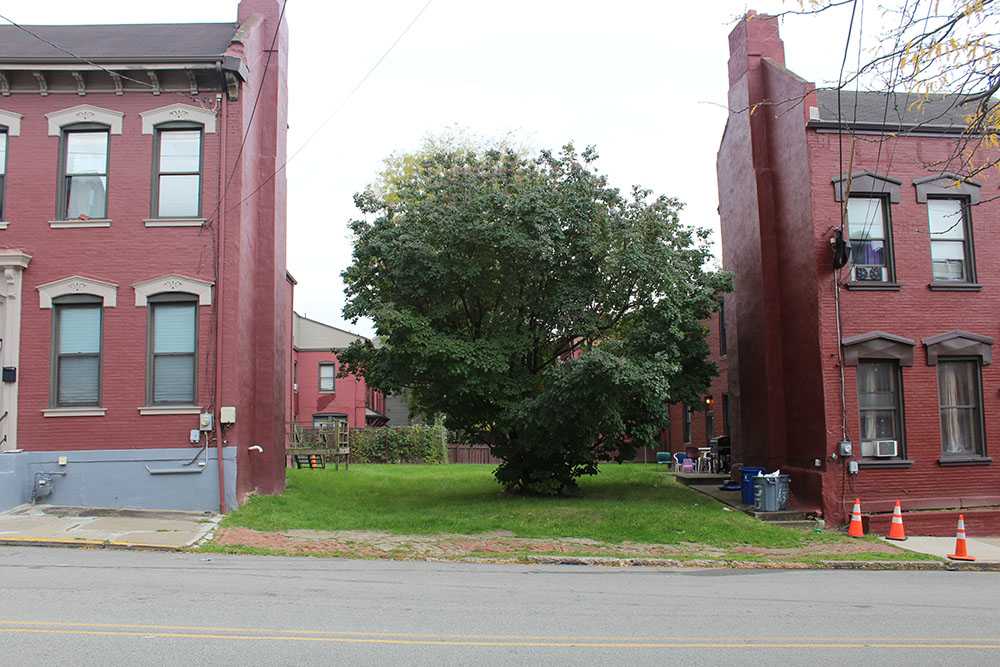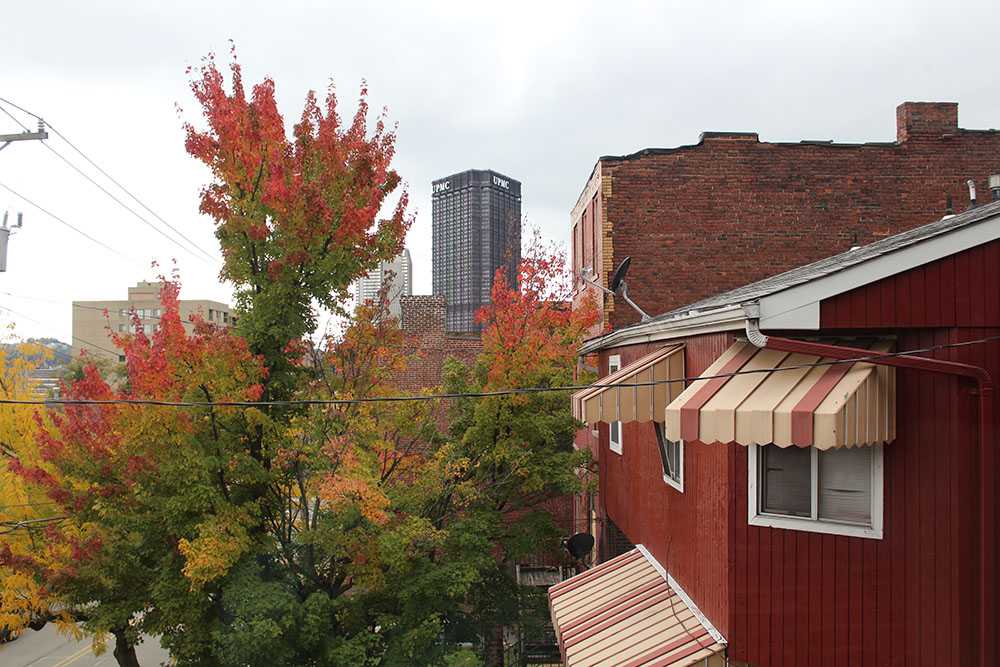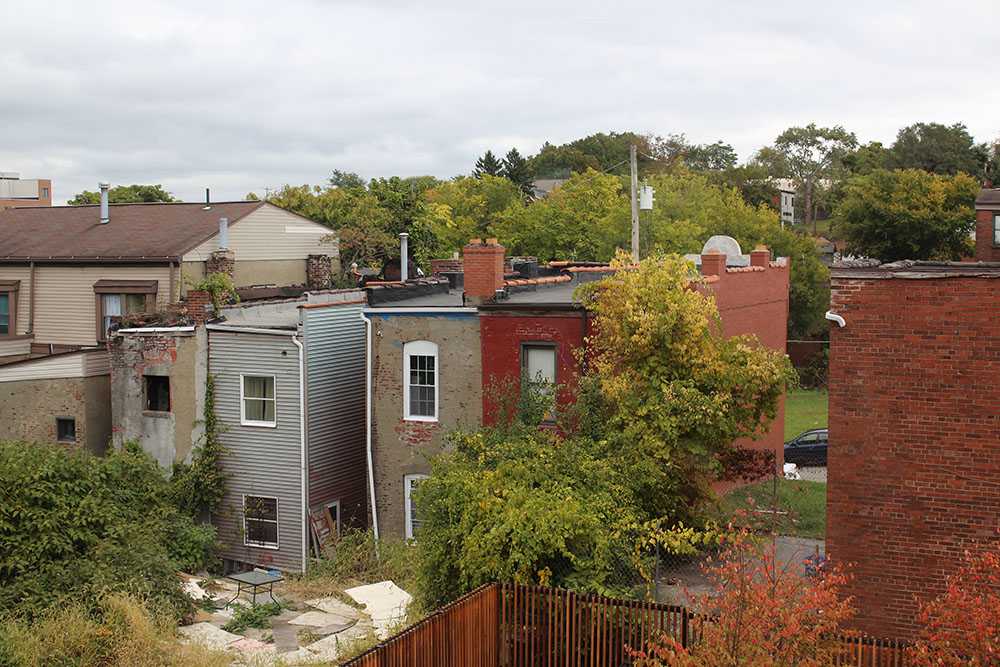Secret Pittsburgh
A Home in the Heart of the Hill
By Patrick Swain
What is home to an old man who doesn’t recognize the house where he raised his children – who drives on a highway built atop the street where he learned to ride a bike, whose memories of birthday parties and cookouts are buried under cement? The hill that created Pittsburgh playwright August Wilson and his stories underwent an astonishing transformation throughout the twentieth century, fueled by America’s vision of post-war progress. This breakneck metamorphosis of Pittsburgh and many cities like it often culminated in destructive and exclusionary urban renewal, threatening to irreparably alter spaces that thousands of people called home. From his house on Bedford Avenue in the Hill District, August Wilson bore witness to these changes in his community and the dispersion of his neighbors, reflected in his explorations of home and displacement in his 1990 play Two Trains Running. After falling into disrepair, renovations to Wilson’s house have reinvigorated his home as a cultural resource – but much of the under-resourced neighborhood around it still exists in disrepair, its decay a living reminder of the horrors of the past.
Three blocks deep into Bedford, the newly renovated August Wilson House stands out among its neighbors with its sleek glass windows and pristine red brick. Unsullied stone steps bearing the names of donors lead to the side door of the house, opening to a polished interior of artwork along a creaking staircase. The house’s appearance represents the duality of progress – it upholds the home’s original structure and character while building upon it, transforming it into something fundamentally new. Prior to its renovation, the deteriorating structure fit in with many buildings in the surrounding neighborhood. The renovations maintain many aspects of the space when Wilson lived there – the essence of the small apartment that housed the Wilson family is mostly preserved. August Wilson’s home, as he knew it, still lives within the walls of the house. Unfortunately, much of the Hill District cannot say the same regarding families inhabiting razed areas during Wilson’s adolescence. The physical structures of thousands of homes cease to exist, having seemingly disappeared into thin air with their destruction and the displacement of their residents. Almost no remnants of the Lower Hill as it existed in the mid-20th century remain, their space replaced by the Civic Arena and its successors. (Mock) Yet, some dwindling semblance of home still exists within the stories and memories of the displaced inhabitants. August Wilson saw this devastation in his community as a young man, informing his perspective on home as an idea, particularly coupled with the threat of displacement. These ideas, and therein the soul of the Hill District, are immortalized in his literature.
The walk down Bedford Avenue from its western extent tells the tragedy of the Hill District. Today, the mouth of Bedford sprouts from a massive highway and abuts a vast expanse of parking lots surrounding PPG Paints Arena. That ground was once home to thousands of Pittsburghers in the former Lower Hill before its leveling and the construction of the Civic Arena; now, the flat, lifeless concrete makes its past unthinkable. Running perpendicular to Bedford is the steep Crawford Street, lined with chain link fences demarcating the lots from the neighborhood. Onward to the east, many decaying and abandoned row houses and brownstones partitioned by overgrown empty lots dot the avenue. Meanwhile, a cluster of downtown monoliths dominated by the U.S. Steel Tower looms over the hill.
The plight of the neighborhood surrounding his home influenced August Wilson in his plays, especially Two Trains Running. The 1990 play following a Hill District restaurant's struggle for survival in 1968 provides clear insight into Wilson’s concept of home and displacement. The restaurant serves as a sort of home for its owner Memphis Lee and several members of the Hill District community. When the city of Pittsburgh offers to pay Memphis in exchange for the restaurant’s demolition to make space for new construction, the restaurant becomes a space of defiance against the alteration of the neighborhood around it – a forum for urban Black life amid the backdrop of social and economic change in the 1960s. Ultimately, the city prevails and the restaurant is leveled, though Memphis is generously compensated. (Wilson) Wilson explores the evaporation of innumerable homes in the Hill District through the microcosm of one restaurant, a fictional building that shared a fate with many real-life structures. Through literature, he chronicled displacement in his neighborhood and the sea changes that made it what it is today.
The story of August Wilson’s neighborhood and its transformation are echoed in countless communities across America, even elsewhere in Pittsburgh like East Liberty and historic Chinatown. These spaces mirror the arch of the Hill District – forces like gentrification, economic downturn, and redevelopment decimated many peoples’ own versions of home, both physically and philosophically. Writer bell hooks investigates this idea in her essay “Homeplace (A Site of Resistance),” originally published the same year as Two Trains Running. The piece details the symbolism of home as a private place of expression and liberation for women of color, a safe haven against the exclusionary and patriarchal forces of the outside world. (hooks) August Wilson’s house embodies this characterization of home, now serving as a creative space and educational resource for the community around it. Only a few blocks away lies the polar opposite – a sort of invisible cemetery for homeplaces submerged in cement, its former glory fading from memory with each passing day.
The renovation of August Wilson’s childhood home represents the preservation of a cultural landmark, while the neighborhood around it has seldom been spared from the unyielding tide of time. The Hill District that a young August Wilson called home was banished to the margins of history to make way for the folly of outside forces, and what remained was left to rot. Still, his body of work encapsulates the spirit of the community as it existed during Wilson’s childhood. His plays exemplify the idea that home can live without the presence of its physical structure – home lives within stories.
Works Cited
hooks, bell. “Homeplace (A Site of Resistance).” Yearning: race, gender, and cultural politics. South End Press, 1990.
Mock, Brentin. “A Black Vision for Redevelopment, in the Birthplace of Urban Renewal.” Bloomberg.com, Bloomberg, 24 June 2021, www.bloomberg.com/news/features/2021-06-24/can-a-demolished-black-neighborhood-build-back-better.
Wilson, August. Two Trains Running. Plume, 1993.


